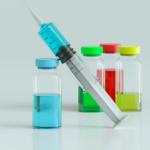The MMWR reports on a “typical” portion of American society, blood donors; their donation provides a sample of the “seroprevalence” of COVID-19 based on the presence of antibodies.
herd immunity
Join our directors of medicine and bio-sciences, Dr. Chuck Dinerstein and Cameron English, as they break down these stories:
Remember the early days of Covid when experts were excitedly talking about herd immunity (HI) and how things would get back to normal when this was reached? How long has it been since the term was used? The answer is five days.
Short answer – poor communication. Let’s take a deeper dive into a term we all know and hear but might not quite understand. What exactly is herd immunity, and how do we get it?
Herd immunity is
One thing we are sure of in speaking about COVID-19 is that it is transmitted person-to-person. [1] Our homes are not exactly super-spreader sites, but once COVID-19 enters, it will have an opportunity to infect all of those in the home.
As of now, the official number of COVID cases in the United States stands at roughly 27.1 million.
Vaccination of high-risk groups against SARS-CoV-2, the virus that causes COVID-19, has begun in earnest – and not a moment too soon because the trends in the United States are moving in the wrong direction.
The following is an excerpt printed with permission of The Baltimore Sun.
Henry I. Miller and Andrew I. Fillat












